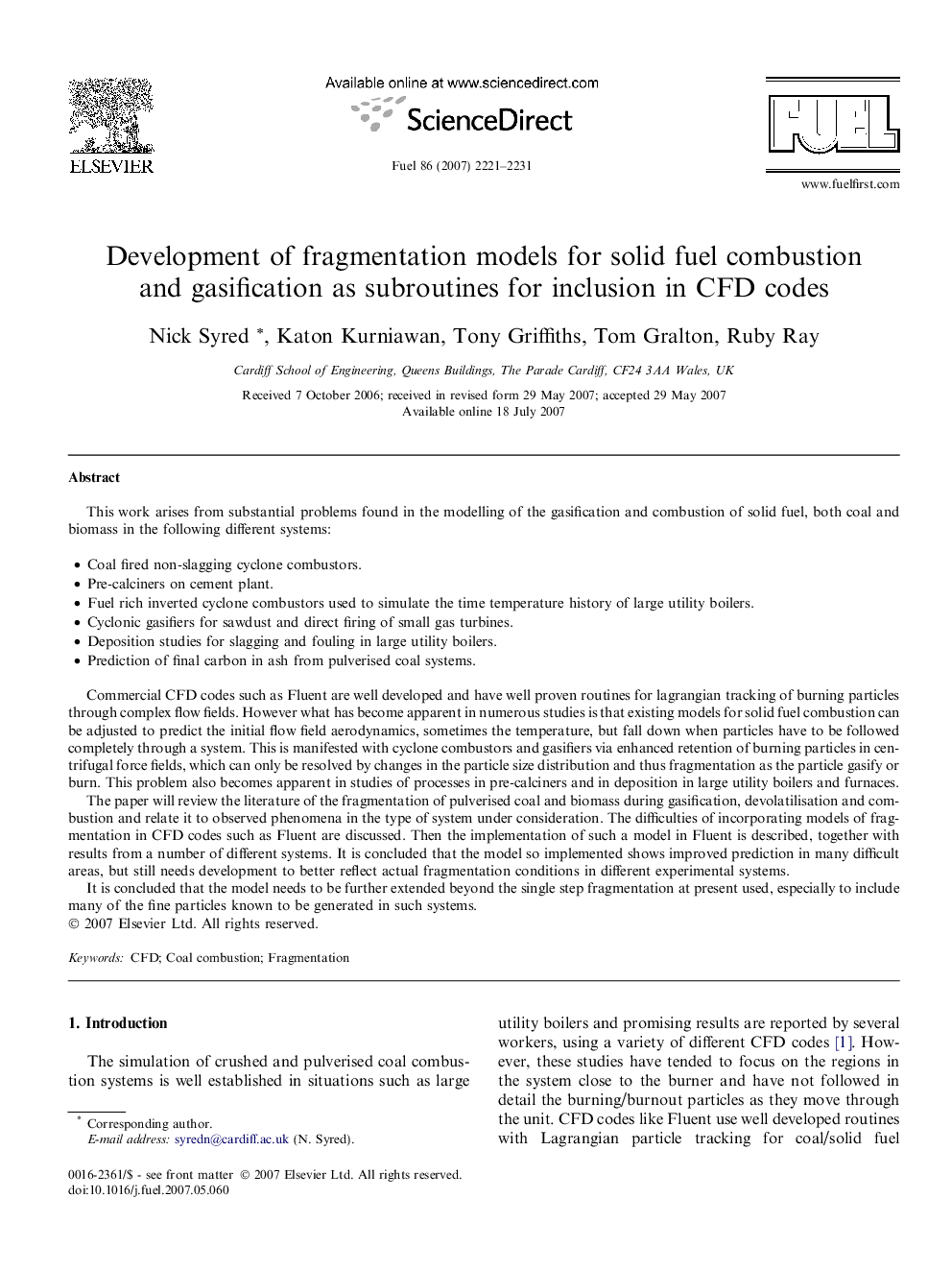| کد مقاله | کد نشریه | سال انتشار | مقاله انگلیسی | نسخه تمام متن |
|---|---|---|---|---|
| 207430 | 461216 | 2007 | 11 صفحه PDF | دانلود رایگان |

This work arises from substantial problems found in the modelling of the gasification and combustion of solid fuel, both coal and biomass in the following different systems:
• Coal fired non-slagging cyclone combustors.
• Pre-calciners on cement plant.
• Fuel rich inverted cyclone combustors used to simulate the time temperature history of large utility boilers.
• Cyclonic gasifiers for sawdust and direct firing of small gas turbines.
• Deposition studies for slagging and fouling in large utility boilers.
• Prediction of final carbon in ash from pulverised coal systems.Commercial CFD codes such as Fluent are well developed and have well proven routines for lagrangian tracking of burning particles through complex flow fields. However what has become apparent in numerous studies is that existing models for solid fuel combustion can be adjusted to predict the initial flow field aerodynamics, sometimes the temperature, but fall down when particles have to be followed completely through a system. This is manifested with cyclone combustors and gasifiers via enhanced retention of burning particles in centrifugal force fields, which can only be resolved by changes in the particle size distribution and thus fragmentation as the particle gasify or burn. This problem also becomes apparent in studies of processes in pre-calciners and in deposition in large utility boilers and furnaces.The paper will review the literature of the fragmentation of pulverised coal and biomass during gasification, devolatilisation and combustion and relate it to observed phenomena in the type of system under consideration. The difficulties of incorporating models of fragmentation in CFD codes such as Fluent are discussed. Then the implementation of such a model in Fluent is described, together with results from a number of different systems. It is concluded that the model so implemented shows improved prediction in many difficult areas, but still needs development to better reflect actual fragmentation conditions in different experimental systems.It is concluded that the model needs to be further extended beyond the single step fragmentation at present used, especially to include many of the fine particles known to be generated in such systems.
Journal: Fuel - Volume 86, Issue 14, September 2007, Pages 2221–2231